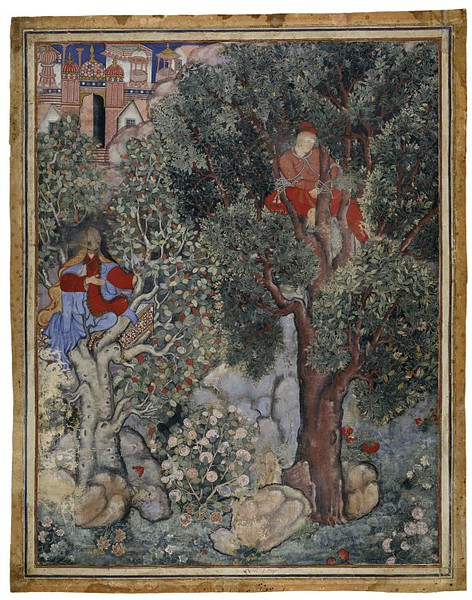Back in the medieval era, travelers braved many perils during their journey. Travelling in large groups was often the norm. The caravanserais of the silk road are legendary. They dotted the length and breadth of this route. The word ‘Caravan’ has Persian origins and it means a ‘group of travellers’ and ‘sara’ means a palace, with the Turkish suffix ‘i’. One of the earliest one developed in the oasis town of Palmyra in Syria from the 2ndCentury BC. From the 10thCentury onwards, many of these caravanserais mushroomed across Central Asia. They offered food and shelter to travelers primarily merchants and traders.
These caravanserais became centres of cultural exchange. Often a favourite means of entertaining themselves was listening to stories. Many epics and classics have a history of oral transmission through centuries before they were penned down. One such medieval epic is the Adventures of Amir Hamza or ‘Dastan-e-Amir Hamza’. The story originated in the 7thCentury in Arabia but over a thousand years it has travelled from Middle East to Persia, Indian Sub- continent and from thereon to South East Asia. There are many versions of this fascinating story which has picked up local flavours in its evolution. It would not be an exaggeration to say that it has been loved the most in the Indian sub-continent. In fact, emperor Akbar had the entire story converted into a pictorial form. In the 19thCentury, an Urdu version came out. As an English reader, I am greatly thankful to Musharraf Ali Farooqui for his brilliant translation from Urdu.
This enchanting epic captivated me for many reasons, one of the obvious ones being that it was possibly famous along the Silk Route cities and quite obviously travelled through that route. It is a story on a grand scale, which has been broken down into multiple books and short chapters with no fewer than 360 stories. This format of short stories within an epic saga make it immensely readable.
It is truly Asian literature at its best. The character of the main hero, Amir Hamza is loosely based on the life of Prophet Muhammad’s uncle Hamza ibn Abdul Muttalib. After the hero’s birth in Mecca, the action seems to have taken place in the Persian court of Naushervan who is the emperor Khosrow I. One can notice the glimpses of the power struggle between the upcoming Arabs and the established Persian empire in the story. The story is based on the heroic exploits of the hero Amir Hamza who travels to far flung lands with his friend and trickster Amar Ayyar. Both have been blessed with heavenly powers and they take on mighty opponents. With the combination of physical strength, magic and heavenly blessings, they fight with giants, sorcerers and a myriad of evil characters in the story. To complicate matters further, Amir Hamza is also in love with Mehr Nigar, the daughter of the emperor Naushervan. It is a heady mix of romance and the classic plot of the victory of good over evil.
The story has some interesting characters. The Chinese emperor with a name like Bahram Gurd seems like an oddity but all is acceptable in this fantasy tale which is loosely based on historical facts. The fact that the Chinese and Persian were the prominent empires in that era is visibly depicted in the story as well. The story spreads over the geographical region of Middle East, West Asia, India and Ceylon. The India that is depicted in the story resembles the India of the Mughal period with many Hindu names as well. It is evident that certain stories may have been narrated orally at a much later time and added to the original story.


2 comments
Sounds very fascinating.
I will look it up for a good read.
Thank you and all good wishes,
Eric
Thanks Eric !